For several years now, many experts have been positioning Xiaomi as one of the leaders in the phone segment, which successfully competes even with Apple and Samsung. Moreover, superb build quality and high performance have long provided Xiaomi flagships with a place in the premium segment. The list of the most popular current models includes:
– Xiaomi 13 and Xiaomi 13 Pro (March 2023, ~$ 700-1,200 or ~$ 600-700 china version) – Qualcomm Snapdragon 8 Gen 2 chipset-based exceptional performance;
– -‘- Poco F5 Pro and Redmi Note 11 Pro 5G – superb value for money;
– Xiaomi 12 Pro – best all-rounder;
– -‘- 12 (April 2022) – ultra compact phone;
– -‘- Black Shark 5 Pro (June 2022) – superb gaming phone, etc.
Of course, the flagship 13 series based on the latest Qualcomm Snapdragon 8 Gen 2 mobile platform is the most interesting.
Snapdragon 8 Gen 2
Of course, Snapdragon 8 Gen 2 is the main intrigue of the new series. As known, this latest octa-core flagship mobile chip debuted on November 15, 2022 at Qualcomm’s annual summit. Like the Snapdragon 8 Plus Gen 1, it’s manufactured by TSMC (Taiwan Semiconductor Manufacturing Company) using a 4nm process.
The chipset has a traditional underlying Kryo CPU octa-core architecture architecture, including a prime Cortex-X3 core (clocked at up to 3.2GHz) + four performance cores (2x Cortex-A715 and 2x Cortex-A710, 2.8GHz) + three efficiency cores (3x Cortex-A510, 2.0GHz). But according to the company, this SoC (system on chip) version has many improvements in AI /image processing, gaming, connectivity and power efficiency.
The list of its main improvements includes:
– ‘Cognitive ISP’.
Spectra ISP (image signal processor) uses existing image segmentation, but with advanced options.
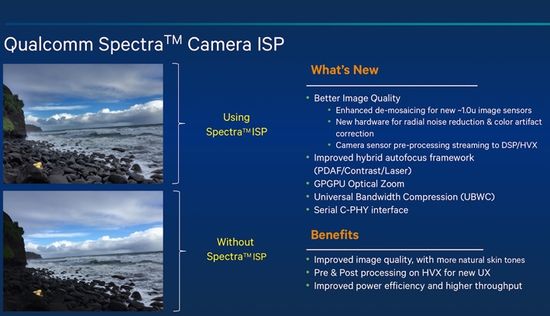
In particular, the phone camera distinguishes between sky / ground, dog / table, etc, choosing the optimal color, tone, sharpness and noise reduction for each object. Essentially, it improves the shooting quality.

– improved gaming visuals (ray tracing, etc).
As known, Qualcomm was inferior to the Samsung’s Exynos 2200 chip of 2021, which supports hardware-accelerated ray tracing (accurate reflections, soft shadows and ambient occlusion). The New Qualcomm 8 Gen 2 eliminates the American giant’s backlog in this aspect.
The Adreno GPU promises 25% faster performance and up to 45% greater power efficiency, and Vulkan 1.3 support (Chinese ‘HDR Vivid’ standard and OLED aging compensation feature).

Other
Of course, Cognitive ISP and ray tracing does not exhaust the range of new Gen 2 features.
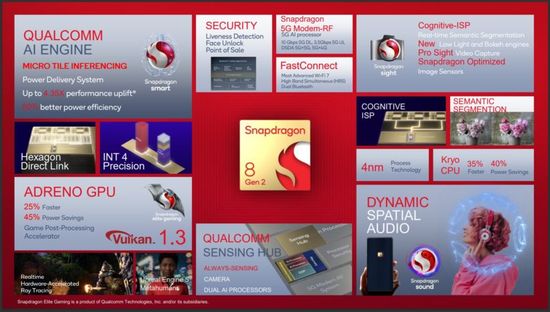
It offers:
– AI (artificial intelligence) performance increase – more simultaneous AI tasks, while using less power.
New SoC uses dedicated Hexagon Processor with enhanced functionality, including a Tensor accelerator. Now it supports the ‘MicroTiles’ option which in effect doubles the size of processed tensors in processing Transformer networks.
According to the company, it increases speed by 4.35 times, including due to the so-called INT4 (integer 4) precision. Respectively, SoC efficiency increases by 60% per watt for AI-based tasks.
Finally, new Qualcomm can scale 32-bit processes down to 4-bit without prejudice to processed data sets quality. According to Ziad Asghar – VP of Product Management at Qualcomm, this can reduce energy consumption by up to 64 times;
– upgraded always-on Sensing Hub supports an ‘always-sensing camera’ for QR code scanning to face proximity detection, facial recognition, even eye-tracking without camera app activation;
– 5G and WiFi.
Like the prototype, 8 Gen 2 supports ultra-fast mmWave (24-300GHz frequency) and sub-6GHz 5G, standalone (SA) and non-standalone (NSA) modes. Its snapdragon X70 5G modem supports up to 10Gbps / 3.5Gbps (down/up 5G), has DSDA (Dual SIM Dual Active) for two 5G SIMs. Finally, AI processor optimizes performance and power of cellular.
FastConnect 7800 of 8 Gen 2 supports WiFi 7 (IEEE 802.11be Extremely High Throughput or EHT, up to 46Gbps, 2.4Hz/5Hz/6GHz) bandwidth and speeds. But, in fairness, it’s inferior to MediaTek’s new Dimensity 9200 chipset;
– dynamic spatial audio option – shifts the sound relative to the head position, increasing the immersiveness of the audio scene.
Xiaomi 13/13 Pro/13 Ultra
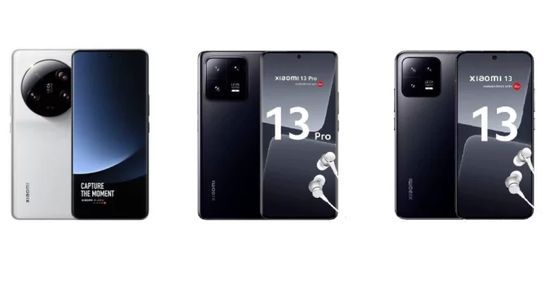
Today, the lineup of models with the new Qualcomm 8 Gen 2 includes the Xiaomi 13, 13 Pro and the announced 13 Ultra.
13 (256GB / 12GB RAM) vs 13 Pro (512GB / 12GB) vs 13 Ultra (?):
– € 800 vs $ 1,300 / € 1,270 / £ 1,100 vs € 1,500 ($ 1,600).
Pros for 13 / 13 Pro / 13 Ultra:
– high performance and energy efficient Snapdragon 8 Gen 2;
– IP68 rating (Ingress Protection);
– superb design – aluminum alloy frame / ceramic body / One-of-a-kind design;
– Xiaomi MIUI 14 (Android 13) OS;
– very bright 120Hz OLED displays with HDR support (FHD+ (2,400 x 1,080), 6.36″, ~414 ppi / WQHD+ (3,200 x 1,440), 6.73″, ~522 ppi, Dolby Vision, 1B colors / WQHD+ (3,200 x 1,440), 6.73″, ~522 ppi, Dolby Vision, LTPO, 1B colors);
– very fast charging and superb battery life with high battery capacity (4500mAh/4820mAh/5000mAh) and energy efficiency of Snapdragon 8 Gen 2;
– great audio output and Dolby Atmos support;
– high quality shooting with Leica lens;
– great cooling – 4,642mm² vapor chamber /LiquidCool technology (super big VC + multi-layer graphite sheets) / Loop LiquidCool technology or Mi IceLoop.
13 Pro
– class-leading photo/video quality and superb portrait mode;
– lossless 2x photo zoom;
– macro with telephoto camera;
– very accurate colors in Leica Authentic mode.
13 Ultra
– most versatile smartphone camera on the market.
Cons
Xiaomi 13
– no faster 120W charging;
– high case temperature under load;
– Gorilla Glass 5 instead of Victus,
– 8K@24fps instead of 30fps.
13 Pro
– too slippery case surface;
– entry level selfie camera;
13 Ultra
– modest selfie camera;
– currently only available in China.
Main differences
List:
– unlike triple-camera module in 13/13Pro, Ultra offers a quad-camera module, including a 1-inch sensor with a changeable aperture. Of course, a combination of ultrawide and two telephotos is sufficient for almost any shooting.
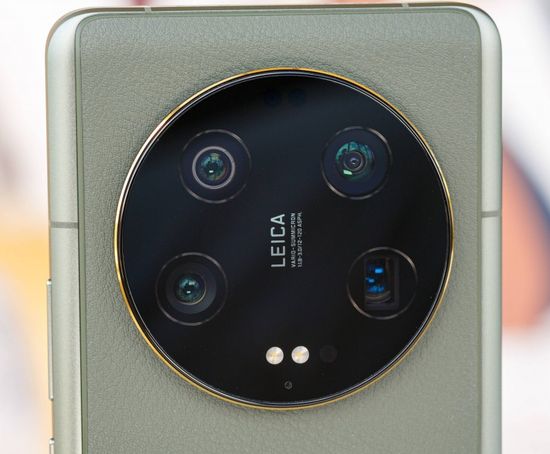
Rear camera (Sony IMX989 + 3x IMX858 sensors):
– Wide (main) – 50 MP, f/1.9 or f/4.0, 23mm, 1.0″-type, 1.6µm, multi-directional PDAF, Laser AF, OIS;
– Ultra wide angle – 50 MP, f/1.8, 12mm, 122˚, 1/2.51″, Dual-Pixel PDAF;
– Telephoto – 50 MP, f/1.8, 75mm, 1/2.51″, Dual-Pixel PDAF, OIS, 3.2x optical zoom;
– Telephoto – 50 MP, f/3.0, 120mm, 1/2.51″, Dual-Pixel PDAF, OIS, 5x optical zoom.
Front camera – 32 MP, f/2.0, 22mm (wide), 0.7µm.
Unlike the 13 Pro, the Ultra provides control over the depth of field through a dual-aperture diaphragm on the main camera (f/1.9 by default, or f/4.0 mode). In fact, the function ensures the capture of sharper subjects at closer distances;
– 6.36″ FHD+ (2,400 x 1,080) screen in Xiaomi 13 vs 6.73″ WQHD+ (3,200 x 1,440) for other;
– from 128GB / 8GB in Xiaomi 13 to 1TB / 16GB RAM for 13 Ultra;
– super big VC + multi-layer graphite sheets (13 and 13 Pro) vs Loop LiquidCool technology or Mi IceLoop (13 Ultra).
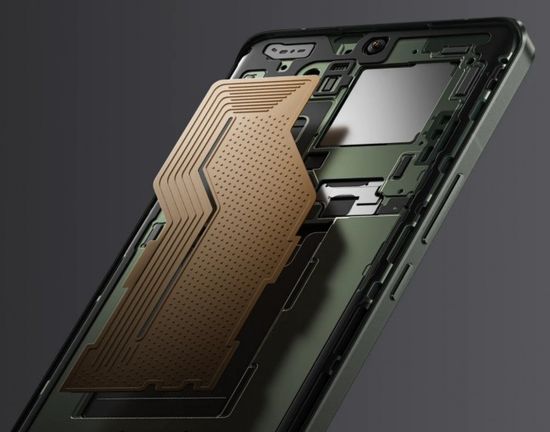
This technology is about 3x more effective vs traditional vapor chambers. It uses a ‘capillary effect’ to draw the liquid cooling agent to the heat source. The heat then vaporises the cooling agent and efficiently disperses the heat towards a cooler area in the system. Of course, its high performance protects the CPU from overheating better, but the smartphone case heats up quickly, even creating discomfort for the hands. Perhaps the mittens in the kit will eliminate this problem.
Xiaomi 13 vs 13 Pro cameras
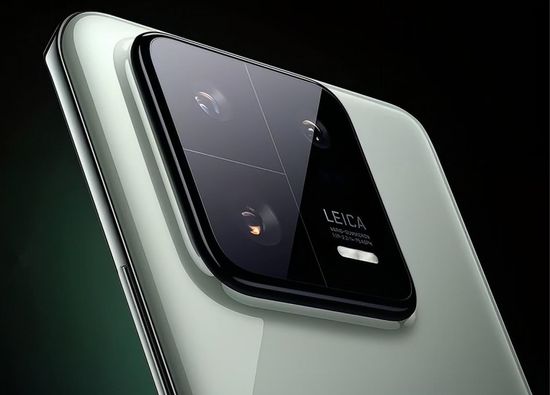
Rear (13 Pro vs 13):
Both – Leica professional optical lens 1:1.9-2.2/14-75 ASPH.
– Main camera –
50MP, 1.6μm pixel size, 3.2 μm 4-in-1 Super Pixel, f/1.9, HyperOIS, IMX989, 8P lens vs
50MP, 1.0μm pixel size, 2.0 μm 4-in-1 Super Pixel, f/1.8, HyperOIS, 7P lens;
– Leica telephoto –
Leica 75mm floating, 50MP, f/2.0, OIS, Focal Shift technology, Floating telephoto lens, 10cm macro photography support, 3P+3P lens vs
10MP, 1/3.75″ sensor size, 1.0µm pixel size, 7, f/2.0, OIS;
– Leica ultra-wide camera –
50MP, 115° FOV, f/2.2, AF (5cm macro photography support) vs
12MP, 1/3.06″ sensor size, 1.12µm pixel size, f/2.2.
Features:
– Leica Authentic Look;
-‘- Vibrant Look;
-‘- filters;
-‘- classic shutter sound;
-‘- Watermark;
Master-lens system:
– 35mm Black and white lens;
– 50mm Swirly bokeh lens;
– 75mm Portrait lens;
– 90mm Soft focus lens;
Xiaomi Imaging Engine:
– Xiaomi ProFocus (Motion tracking focus / Eye tracking focus / Motion capture);
– Lightning Burst;
– Night mode for wide/ultra wide/telephoto (+ Portrait Night mode in 13 Pro);
– Digital zoom up to 70x vs up to 30x;
– HDR, Supermoon, Panorama, Documents, Clone, Long exposure, Pro mode.
Video:
– HDR video recording up to 4K@60 fps with Dolby Vision;
– 8K (7,680 x 4,320)@24fps;
– 4K (3,840 x 2,160)@24/30/60fps;
– HD 1080p (1,920 x 1,080)@30/60fps;
– HD 720p (1,280 x 720)@30 fps.
Features:
– Xiaomi ProFocus (motion tracking focus);
– Ultra Night Video up to 4K@24fps;
– One-click AI cinema (Magic Zoom, Slow Shutter, Time Freeze, Night Time-lapse, Parallel World, Freeze Frame Video);
– Video pro mode, Slow motion for 120/240/480/960/1920fps (+Vlog mode for 13 Pro).
32MP selfie camera – f/2.00.7μm pixel size, 1.4μm 4-in-1 Super Pixel, 89.6° FOV.
Comparison
All models use new CPU (Qualcomm FastConnect 7800 Mobile Connectivity System):
– 1x Prime core (X3-based), up to 3.19GHz;
– 4x Performance cores (A715 and A710-based), up to 2.8GHz;
– 3x Efficiency cores (A510-based), up to 2.0GHz.
Ultra vs Pro
According to European websites, 13 Ultra will come with 256GB storage & 12GB RAM / 512GB & 16GB or 1TB & 16GB (LPDDR5X and UFS 4.0).
13 Ultra has 4-camera rear module.
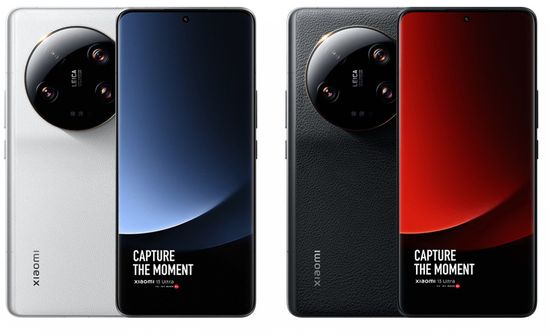
Testing (Pro vs Ultra):
– GeekBench 6 (single/multi core) – 2000 vs 1987 / 5556 vs 5323;
– GeekBench 5 (single/multi core) – 1477 vs 1490 / 5049 vs 5087;
– AnTuTu 9 – 1268538 vs 1281666.
Battery and Charging (Ultra vs Pro) – 5000 mAh vs 4820 mAh.
The Xiaomi 13 Pro supports Boost Charge or HyperCharge mode (fastest charging at 120W), but this option is turned off by default and is activated in Battery settings. Otherwise, it’s limited up to 60-80W charging. In testing, charging to 60% lasts only 15 minutes.
The 13 Ultra supports USB PowerDelivery 3.0 and Qualcomm QuickCharge 4.0 with charging up to 90W. In reality, the battery charges up to 91% in about 30 minutes.
Xiaomi 13 vs 13 Pro
Both model use 120Hz AMOLED display with 1,200 nits / up to 1,900 nits peak brightness, Pro HDR , Dolby Vision, HDR10+ support, DCI-P3 colour gamut, 360° ambient light sensors.
But (13 Pro vs 13):
– WQHD+ (3,200 x 1,440), 6.73″, ~522 ppi density, AdaptiveSync Pro, LTPO, Corning Gorilla Glass Victus vs
FHD+ (2,400 x 1,080), 6.36″, ~414 ppi density, AdaptiveSync, Corning Gorilla Glass 5.
Storage & RAM
– 256GB / 12GB & 512GB / 12GB, LPDDR5X 8533Mbps RAM + UFS 4.0 storage vs
256GB / 8GB & 256GB / 12GB, LPDDR5X 8533Mbps RAM + UFS 4.0 storage.
Conclusion
Once again, the Chinese giant has confirmed its status of the innovative leader in the smartphone segment by introducing the Snapdragon 8 Gen 2-based Xiaomi 13 series. It includes Xiaomi 13, 13 Pro and the announced 13 Ultra. Their prices of € 800 (Xiaomi 13, 256GB / 12GB), $ 1,300 / €1,270 / £1,100 (13 Pro, 512GB / 12GB), and € 1,500 / $ 1,600 (13 Ultra, storage/RAM unknown) cover the entire premium segment.
The series can be positioned as a gaming series due to superb 8 Gen 2, efficient cooling (big VC + multi-layer graphite sheets or Loop LiquidCool technology), capacious batteries (4500-5000 mAh) and fast charging technologies, including HyperCharge mode. The bright 6.73″ WQHD+ display of the 13 Pro / Ultra is ideal for watching videos even in diffuse daylight.
Perhaps triple-camera modules of 13/13 Pro are inferior to some of the competition, including Samsung Galaxy S23 Ultra, iPhone 14 Pro Max or Google Pixel 7. But the rear quad-camera module of the 13 Ultra matches the best current camera phones. In general, this model may well be positioned as one of the best gaming camera phones.
Moreover, the company also introduced the Snapdragon 8 Gen 1-based sub-flagship Xiaomi Poco F5 Pro, which claims to be among the bestsellers due to superb value for money.
This video demonstrates Xiaomi Loop LiquidCool technology.
